Mink farmers feel the chill as Russian market weakens
Updated: 2015-02-27 07:10
By Wang Zhuoqiong In Beijing And Zhao Ruixue In Weihai, Shandong.(China Daily USA)
|
|||||||||
Many plan to focus on growing demand for high-quality garments in domestic market, report Wang Zhuoqiong in Beijing and Zhao Ruixue in Weihai, Shandong.
Mink farmers in China had a harsh winter as prices and demand fell in reaction to weak markets in Russia and Eastern Europe.
Wang Yongquan, deputy head of the Husbandry Bureau in the Wendeng district of Weihai, a city in East China's Shandong province, said the export volume of fur in 2014 in Wendeng dropped 30 percent year-on-year. Russia has long been its largest foreign market.
Fur prices have been low since September, said Wang. For example, the price for a male mink's pelt was 300 yuan ($48) or more, and that of a female was 200 yuan, at the peak in 2013. But in 2014, male pelts were priced at an average of 180 yuan.
According to the China Fur Association, exports of raw fur products in the first 11 months of last year totaled 6 million kilograms, down from 7.5 million kg in 2013.
"Many farmers are holding back their furs and waiting for the price to surge this year," Wang said. "The number of farmed fur animals was cut 30 to 40 percent in 2014."
Wendeng district is home to more than 8,600 farms that raise 14 million fur-bearing animals. Of those, about 7 million are minks and 2 million are foxes. These farms account for about one-third of domestic mink production.
Mink farming is concentrated in Shandong, Liaoning and Hebei provinces. Shandong is by far the dominant source, accounting for over 76 percent of total mink products, according to the CFA.
Sun Kai, secretary-general of the Textile and Garment Chamber's fur branch at the All China Federation of Industry and Commerce, said that slowing global demand for fur products has had a major impact on farmers in Shandong province and a lesser effect on producers in Northeast China.
"About one-fifth of farmers will be driven out of the market this year."
But he said that the sluggish market is a warning to the industry that it must further consolidate, given that small, individual farmers are still a majority of the industry. There is no national auction system for fur, and the sector mainly relies on 10 trading markets that connect farmers and manufacturing companies.
Shandong is viewed as a province that produces low- and medium-end fur products, so farming companies there are now scrambling to meet rising domestic demand for high-end fur products.
"The best mink is now sold to China. We should grab that market by raising the best breeds," said Lin Zijun, general manager of Weihai Shengtaiyuan Mink Industry Co Ltd.
China is currently the world's largest importer of fur. Demand is also strong in North America, Europe and Russia. There are also eager customers in developing markets such as Ukraine, Turkey and Kazakhstan.
The biggest exporter of fur is Europe, according to the International Fur Trade Federation.
The key to improving the quality of domestic fur is the introduction of foreign breeds. But the challenges lies in raising them, said Lin.
"Our farming facilities are world-class. The composition of feed and breeding procedures are the most difficult issues," said Lin.
He hired foreign breeding and farming experts to work at his farm in Shandong.
"It takes the same amount of time and energy, but the turnover is much higher than can be achieved from farming domestic mink," said Lin.
The company invested more than 30 million yuan to import 30,000 white mink in 2014, and their pelts are expected to go on sale starting from August. The profits are likely to be at least double those achieved by raising domestic breeds, he said.
Furs from domestic breeds are being sold at 180 yuan, but imported breeds can fetch 600 yuan, said Lin.
Wendeng Aogilleace Mink Industry Co Ltd imported 45,000 minks from Denmark between 2013 and 2014. The company produces 40,000 mink pelts each year, but the clothing operations of the company require 150,000 pelts annually, said Zhou Guangyu, manager at Aogilleace.
Lin said many of his peers in Shandong cut their production in half this year as they wait for the Eastern European market to pick up.
"The future of the market is in China," said Lin.
Contact the writers at wangzhuoqiong@chinadaily.com.cn and zhaoruixue@chinadaily.com.cn
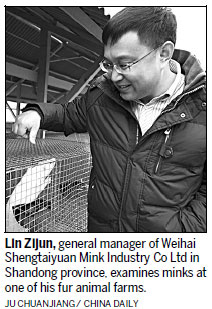
(China Daily USA 02/27/2015 page17)
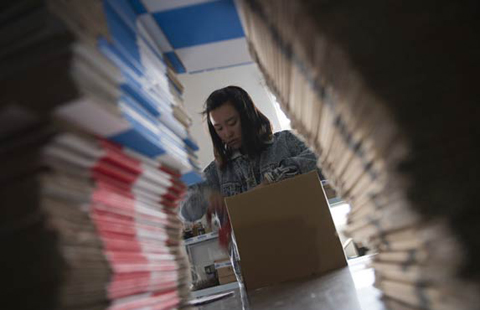
 Inside a Taobao village
Inside a Taobao village
 Testing mettle: Students appear for art college exam
Testing mettle: Students appear for art college exam
 Top 10 best-selling SUVs in Chinese mainland in 2014
Top 10 best-selling SUVs in Chinese mainland in 2014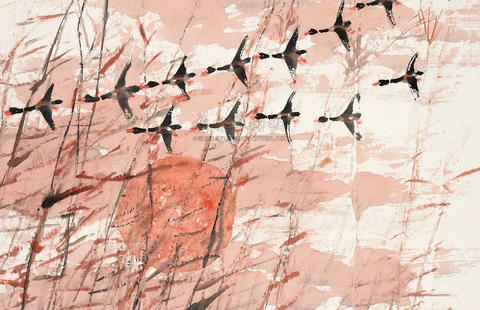
 The eighth nine days: wild geese are flying back
The eighth nine days: wild geese are flying back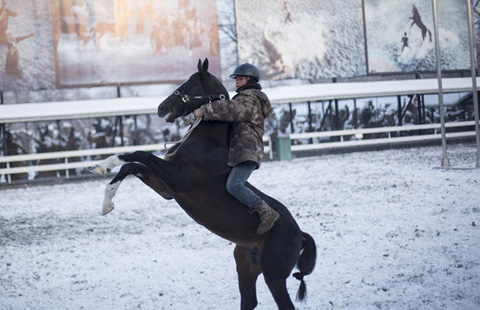
 China's biggest Akhal-Teke horse base
China's biggest Akhal-Teke horse base
 Chengdu citizens visit Du Fu Thatched Cottage to mark Human Day
Chengdu citizens visit Du Fu Thatched Cottage to mark Human Day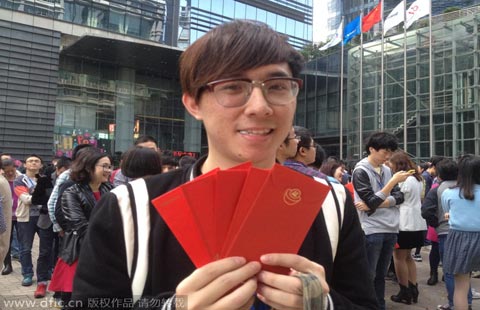
 Tencent gifts red envelopes to employees
Tencent gifts red envelopes to employees Throwing coins to please God of Wealth
Throwing coins to please God of Wealth
Most Viewed
Editor's Picks

|

|

|

|

|

|
Today's Top News
China, US work to make Xi's visit successful
Challenges loom as meetings approach
Chinese smartphone company seeks more gains in US
Obama blames immigration woes on Republicans
New fighter jet ready for PLA
Why China's youth is getting the needle
Most Chinese forced to return home were living abroad illegally
US State Dept calls for cyber security boost
US Weekly

|

|








